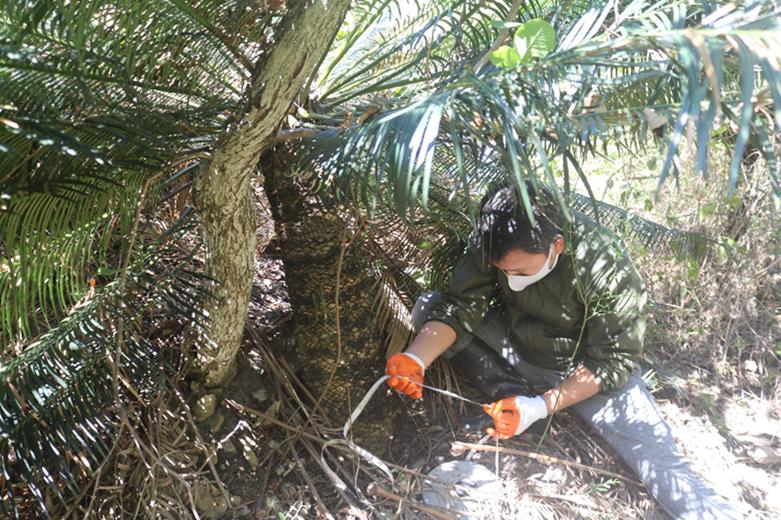Sonam Tobgay
Cycas pectinata is recorded from five locations from Bhutan. Although C. pectinata is well known from South East Asian countries, it is not studied from Bhutan. There are no studies conducted to understand the habitat, population, regeneration and threats on this relic plant population in Bhutan. Public awareness to these plants is minimal and there is a need to give public education and awareness about the presence of species. The proposed study aims to carry out detail study on population, habitat and associated threats to C. pectinata in Bhutan and advocate to local, students and planners about the species.

Team member taking morphometric characteristics of lone survival Cycas plant in the area above Lingmethang Highway Road
Cycas is the sole genus under family Cycadaceae. Most of the Cycas species (62%) are listed in IUCN as threatened group of plants. The species is under severe threat with its population declining due to estimated 30% of its natural habitat destroyed over past 90 years. More of its suitable habitat are likely to get reduced under predicted climate change scenario. In Bhutan, Cycas pectinata was first documented by Grierson and Long (1983) from two districts: Mongar and Trashigang (Now Trashi Yangtse). Since then the specie are recorded from three additional localities. The known localities of species occurrence are geographically isolated which further threatens its genetic viability. Although more than half of the country’s total land area is protected for conservation, only one known location of the C. pectinata is in the protected area, making the species less likely to get protected by law with priority. Habitat suitability modelling under climate change scenario also does not indicate the protection of the species from the known location. This proposed study will carry out detail study on population, habitat and immediate threats and conservation measure, including awareness to local people and school children, of the species from two population from the eastern region: Lingmethang in Mongar and Gomphukora in Trashiyangtse.